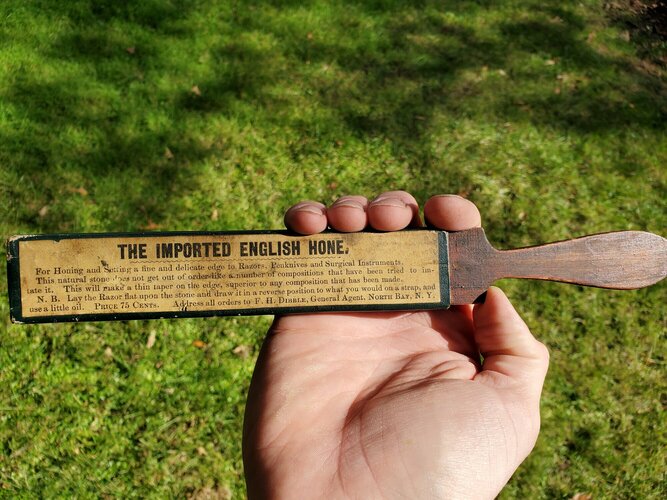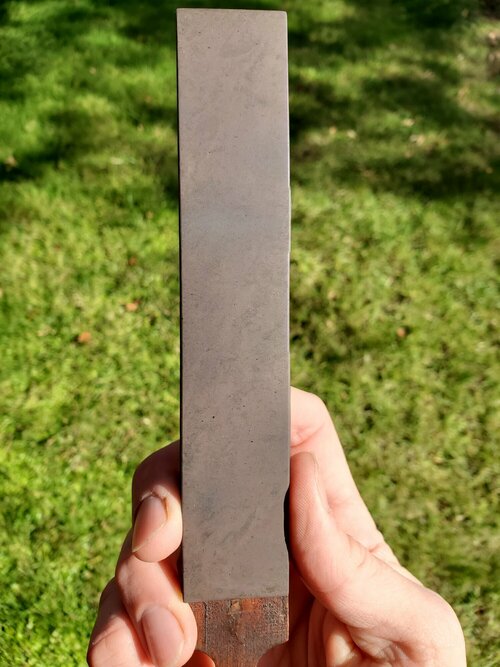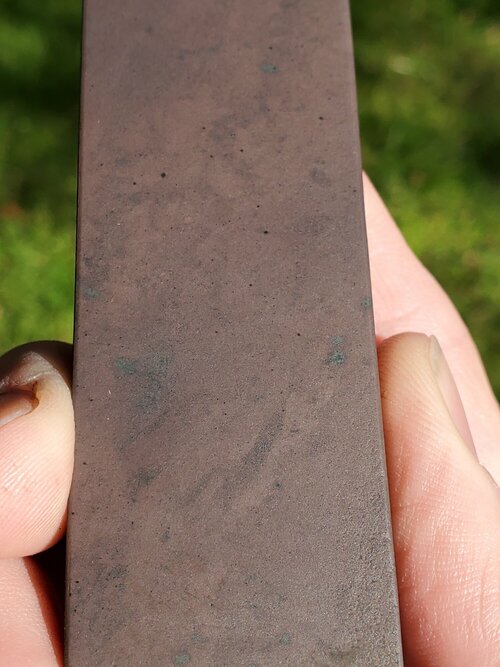That is a pretty stone, but not sure it is a Charnley Forest. I would lean more toward Llyn Idwal or even Glanrafon. I have a similar stone not sure of what exactly it is either, but I don't think it is CF as it seems different in comparison. It is the one on the right in my pic.
View attachment 1360524
Ah yeah... yours on the right there does look really quite similar!
The reason I think mine is a CF is that I bought it from someone who was selling her father's collection of 50 odd stones and an awful lot of them were Charnleys. Others were a mixed bag of naturals and synths, but I don't think I spotted any Idwals in there. Mine does have some areas with a bit of reddish blush coming through on the surface and one of the sides, and I've seen pics of a few others that look like this. Though I'm very new to these, so could be wrong!
My one above is probably slightly finer than my other two CFs, and certainly finer than my (also two) Idwals. I don't know much about Glenrafon at all, apart from seeing them mentioned once or twice, so off to read up now...
Also - that was one of a number of stones I've bought over the last year or so from people in the UK, quite a few of which I'm not sure about exact ID-ing, so if you or anybody else have any thoughts they'd be much appreciated: Natural Stone Haul, Knowns and Unknowns - https://www.badgerandblade.com/forum/threads/natural-stone-haul-knowns-and-unknowns.616369/






